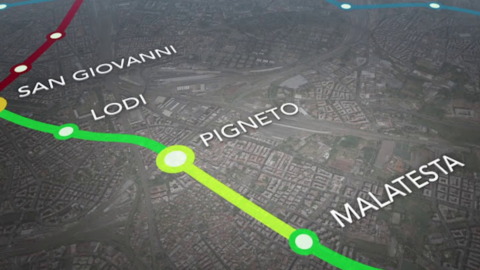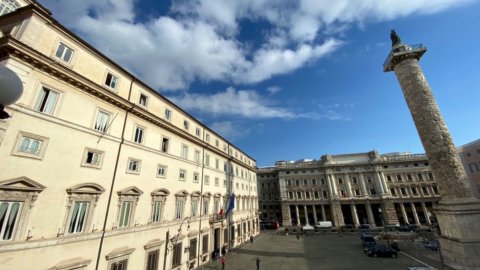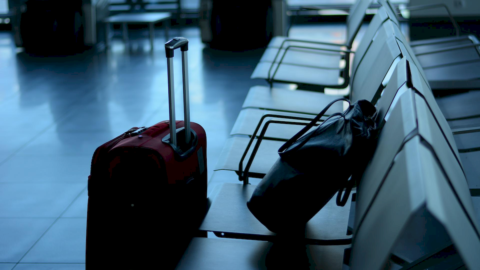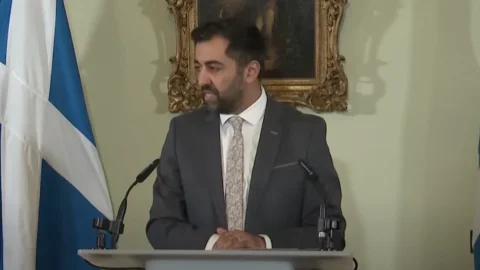Dove comprare property a Roma? Not close to Metro C. Having the subway less than a kilometer from home would be the dream of any Roman: easier to move and also faster, no endless searches for parking, cleaner air. And if it's your own home, it will be worth more. But no. At least this is the strange case of Metro C, under construction in Rome, which according to researchers at the Bank of Italy, has had a negative impact on the houses where the line passes. A confirmation or a denial of this evidence can be had with the opening of the stops in the center of Rome, where real estate prices are less volatile.
What are the Metro C stops in Rome?
Metro C is there third line of subway of Rome, still under construction, and crosses the southeastern part of the city. Its terminus are Saint John e Monte Compatri-Pantano, located in the municipality of Monte Compatri. It is the first Roman subway to operate with driverless trains built by AnsaldoBreda and it is also the only one to have a system of doors that separates the platform from the railway tracks.
It extends for a total of about 18 kilometers with 22 stops, one of which is an interchange with line A (San Giovanni) and the other two with the railway Rome-Giardinetti. Starting from the countryside of Monte Compatri, line C crosses very populous districts choked by traffic, such as Centocelle, Pigneto, up to San Giovanni. In the future it will come to the center: Colosseum, Corso Vittorio, Saint Peter, meadows. But why did it have an inverse impact on the real estate market?
Metro C in Rome: houses lose value
The houses within a kilometer of the new stations already in operation have lost value, on average by 137 euros per square metre, about 5% of the previous value, which was close to 3 euros per square metre. Not a huge drop, but statistically significant.
It is what emerges from paper of Bank of Italy "The impact of metro C in Rome on the housing market” edited by Federica Daniele and Elena Romito, who compared the properties near the new green line 3 years after the inauguration with the prices of similar areas in Rome, but without the subway. How is it possible? This devaluation it is driven by the contraction in the average prices of the most expensive properties, a symptom of the propensity of the wealthiest people to buy homes elsewhere. Basically "the more the house was worth before, the more value it loses". Partly because they fear for their own safety and partly because of the widespread sense of distrust towards the foreign, especially among the wealthiest people: the underground involves greater transit around the stations, especially of foreigners, the major users of public transport.
But not only the houses, even the economic activities in the area have not benefited much from the arrival of the new metro. Via Nazionale researchers recorded the opening of a few more shops and offices, but not much.
Metro C: 2,1 billion in the maneuver of the Meloni government
I jobs planned for the Metro C of the Capital are a real revolution that looks to the Jubilee of 2025. In Rome, one of the largest municipalities in Europe, there are only 59,4 kilometers of underground, less than 96,8 in Milan (which is 7 times smaller than Rome), or the 294 of Madrid (which is half), or the 405 kilometers of London. A infrastructure gap that the government aims to reduce. “The Metro C Porta Metronia station should come into operation in October 2024 and the Colosseum from February 2025″. The advances on the timetable for the opening of the future central stations of Metro C arrive from the mayor Roberto Gualtieri.
“Respect the times, and start the construction of Venice and the entire section of Metro C up to Farnesina. It will be a qualitative leap for sustainable mobility in Rome. The new construction sites? In March 2023 we start in Venice but we have already gone under. And the Farnesina is scheduled for 2032”. In the maneuver there are well 2,1 billion euros for the green line. A good 900 million euros more than the 1,2 billion which had been discussed in the last few days of furious controversy over the appropriations first foreseen and then revoked.





